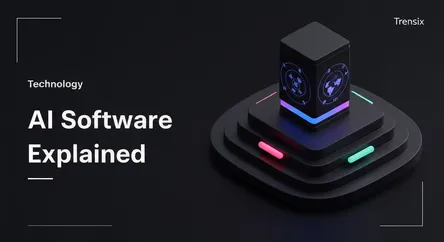Technology
AI Software Explained

Discover what AI software is, the tools and platforms that leverage it, and how artificial intelligence is transforming industries and daily life.
What is it?
AI software refers to programs, applications, and platforms designed to simulate human intelligence. These tools use complex algorithms and machine learning models to perform tasks like learning from data, recognizing patterns, understanding language, and making decisions. This category is incredibly broad, encompassing everything from machine learning libraries like TensorFlow and PyTorch, which developers use to build custom AI, to end-user applications like virtual assistants (Siri, Alexa), grammar checkers, and AI-powered image generators. The core function is to process vast amounts of information and automate tasks that would typically require human cognitive effort.
Why is it trending?
The surge in AI software's popularity is driven by a convergence of factors. Firstly, massive increases in computational power and the availability of large datasets (big data) have made it possible to train more complex and accurate AI models. Secondly, businesses across all sectors are recognizing its potential to boost efficiency, personalize customer experiences, and gain a competitive edge. The recent explosion of generative AI tools like ChatGPT and Midjourney has made AI's capabilities directly accessible to the public, sparking widespread curiosity and adoption for creative and professional tasks.
How does it affect people?
AI software is deeply integrated into modern life. On a personal level, it powers the recommendation engines for streaming services, spam filters in email, and navigation apps that predict traffic. Professionally, it's revolutionizing industries by automating data analysis, assisting in medical diagnoses, powering financial fraud detection systems, and handling customer service inquiries through chatbots. While it brings immense convenience and unlocks new possibilities, it also raises important questions about job displacement, data privacy, and algorithmic bias, making it a critical area of ongoing social and ethical discussion.